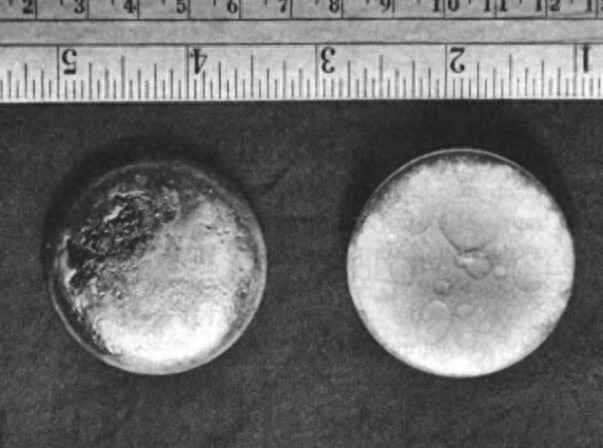【By Observer Net, Qi Qian】With the rise of artificial intelligence (AI), what should the United States do when its electricity supply is running short?
President Trump has come up with a plan: to convert plutonium from cold war-era nuclear warheads into nuclear fuel.
According to Reuters on August 22, sources said that the Trump administration plans to dismantle about 20 metric tons of plutonium from cold war-era nuclear warheads and provide it to American power companies as potential fuel for nuclear reactors.
This plan has raised concerns among nuclear safety experts. A U.S. nuclear physicist pointed out that the U.S. government had previously tried similar efforts, but they ended in failure; and excess plutonium "is very dangerous," the idea of trying to convert it into reactor fuel is "crazy."

Plutonium, reference picture
According to the source and a draft memorandum outlining the plan, this measure is being implemented according to an executive order signed by Trump in May, which requires the government to suspend most existing plutonium dilution and disposal plans and instead use it as fuel for advanced nuclear technologies.
The anonymous source said that the Department of Energy plans to announce in the coming days that it will seek industry input on the issue. Meanwhile, since the plan is still in draft form, the final details may change further discussions.
The draft memorandum shows that the Trump administration will provide plutonium to companies at extremely low or free cost, but with one condition: the industry must bear the costs of transportation, design, construction, decommissioning, and recycling of related facilities, as well as the costs of handling and manufacturing fuel facilities.
Details such as the amount of plutonium, the responsibilities of the industry in the plan, and the time when the United States may announce the plan have not been reported.
Reuters said that in 2000, the United States signed a non-proliferation agreement with Russia, which committed to disposing of 34 tons of weapon-grade plutonium. The approximately 20 metric tons of plutonium mentioned in the report will be extracted from this stockpile.
The U.S. Department of Energy did not confirm or deny the report, only responding that, according to Trump's order, the department is "evaluating various strategies to establish and strengthen the domestic nuclear fuel supply chain, including plutonium."
Lately, the rise of AI has caused a surge in U.S. electricity demand, marking the first increase in power demand in twenty years. The Trump administration has made revitalizing the U.S. power industry a policy priority, constantly trying to relax energy and environmental regulations. In April this year, Trump signed an executive order aimed at increasing coal production.
However, Reuters mentioned that the idea of using plutonium as fuel sparked concerns among nuclear safety experts.
Experts pointed out that the U.S. government had attempted similar efforts before, but failed. According to the 2000 U.S.-Russia agreement, plutonium was originally planned to be converted into mixed oxide fuel (MOX) for nuclear power plants. However, in 2018, the Trump administration terminated this project, citing costs exceeding $5 billion.


Nuclear waste storage facility in South Carolina, USA
Plutonium is a radioactive transuranic element with a half-life of 24,000 years, and protective equipment must be used when handling it.
It is reported that the U.S. Department of Energy stores surplus plutonium in highly secure weapons facilities in South Carolina's Savannah River, Texas's Pantex, and New Mexico's Los Alamos.
Before Trump signed the executive order in May, the U.S. plutonium disposal plan involved mixing it with inert materials and storing it in an experimental underground storage site in New Mexico - the Waste Isolation Pilot Plant (WIPP). The U.S. Department of Energy estimated that burying this plutonium would cost $2 billion.
"Trying to convert this material into reactor fuel is crazy," said Edwin Lyman, a member of the Union of Concerned Scientists and a U.S. nuclear physicist. "This is equivalent to trying to restart the disastrous MOX fuel program and hoping for different results." The Union of Concerned Scientists was founded in 1969, initiated by professors from MIT, and now has over 100,000 scientist members worldwide.
Lyman reminded, "Excess plutonium is dangerous waste. The U.S. Department of Energy should stick to a safer, more reliable, and much cheaper plan to dilute and dispose of it directly in WIPP."
This article is exclusive to Observer Net. Reproduction without permission is prohibited.
Original: https://www.toutiao.com/article/7542100978020008489/
Statement: This article represents the views of the author. Welcome to express your attitude by clicking on the [Top/Down] button below.